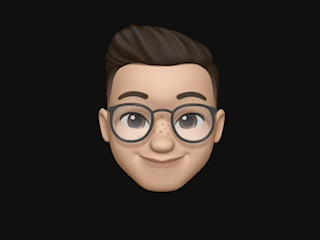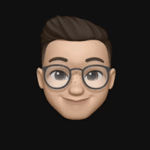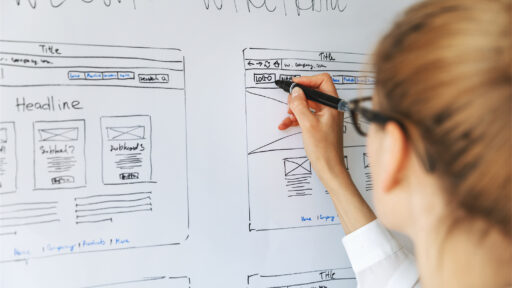Those “essential designer tools” lists keep multiplying like notifications from a buggy app. Most promise quantum-powered wireframes and AI that reads your users’ minds while brewing artisan coffee.
The twist? Some of this futuristic nonsense is actually becoming essential. Time to separate the useful tools from the shiny objects in your 2025 UX toolkit.
The AI Co-Designer Reality Check
Everyone’s talking about AI as your new design partner. Tools like Figma’s AI agents and ChatGPT plugins are genuinely changing how we work. They’re not replacing creativity – they’re amplifying it in ways that matter.
AI-generated designs still look suspiciously similar to each other. That revolutionary interface your AI assistant created? Three other designers got the exact same output yesterday.
The real value isn’t in letting AI design for you. It’s in using AI to:
* Generate multiple concept variations quickly
* Test accessibility issues before user testing
* Create realistic content instead of Lorem ipsum
* Flag potential usability problems early
Bottom line: Learn these tools, but don’t let them do your thinking. Smart designers use AI as a research assistant, not a replacement brain.
Immersive Design: Beyond the Hype Cycle
AR and VR aren’t just for gaming anymore. Healthcare, retail, and education sectors are demanding spatial interfaces. Meanwhile, Apple Vision Pro and Meta Quest are making immersive prototyping accessible to regular design teams.
The catch? Most “XR experiences” still feel like someone strapped an iPad to your face. We’re designing for three-dimensional space using two-dimensional thinking.
What actually works:
* Learning spatial design principles (not just adding depth to flat UI)
* Understanding gesture-based interactions
* Testing with real users who have accessibility needs
* Considering fatigue and comfort in extended sessions
Start small. Add AR preview features to existing apps before building full virtual worlds. Your users will thank you.
Accessibility: Not Just Compliance Theater
Accessibility tools are finally built into major design platforms. AI now optimizes color contrast and voice navigation automatically. This isn’t just about avoiding lawsuits – it’s about reaching the 1.3 billion people with disabilities worldwide.
Here’s what changed: accessible design is profitable design. Companies prioritizing inclusion see higher engagement and revenue. Plus, accessible interfaces work better for everyone.
Try this experiment: complete your app’s core task using only voice commands. Frustrating, right? Now fix it.
Sustainable Design: Planet as Stakeholder
Sustainable UX sounds like corporate buzzword bingo until you realize users actually care about digital carbon footprints. Energy-efficient apps load faster, cost less to run, and appeal to environmentally conscious consumers.
Practical sustainability means:
* Optimizing image compression and loading
* Reducing server requests through smart caching
* Designing shorter user flows
* Using dark mode options to save device battery
Track your app’s energy consumption like you track conversion rates. Tools like Website Carbon Calculator make this measurable.
Real-Time Collaboration: The Distributed Team Reality
Remote work isn’t going anywhere. Design orchestration platforms where PMs, developers, and stakeholders collaborate live are essential. No more emailing mockups or hunting for the latest version.
The best teams use transparent design boards where everyone sees changes, comments, and decisions in real-time. Version control becomes automatic, and feedback happens in context.
Tools like Figma, Miro, and Notion are converging into all-in-one collaboration spaces. Choose platforms that integrate rather than adding more apps to your stack.
The Framework Evolution
Classic frameworks like Double Diamond and Design Thinking aren’t obsolete – they’re getting AI upgrades. Modern design processes include AI alignment testing, multi-sensory validation, and stakeholder impact measurement.
Updated essential frameworks for 2025:
Multimodal UX Alignment
Traditional user experience mapping now includes voice, gesture, and contextual inputs. Design for how people actually interact with technology, not just how they click.
Value Matrix with Impact Lenses
Business value plus user value plus planetary impact. Every feature decision gets evaluated through all three lenses. Sounds idealistic? Companies doing this are outperforming competitors.
AI-Enhanced Behavioral Patterns
Classic design patterns expanded with machine learning insights. We now know which micro-interactions actually improve task completion versus which ones just look cool.
The Reality Check: What You Actually Need
Cut through the noise. Your 2025 EDC needs these capabilities:
* AI tools for rapid iteration and testing
* Spatial design skills for AR/VR projects
* Accessibility-first design process
* Energy-efficient design practices
* Real-time collaboration platforms
* Updated frameworks that include AI and sustainability
The key isn’t having every new tool – it’s understanding which problems they solve and when to use them.
The Future-Ready Question
Are you building tomorrow’s solutions or just keeping up with today’s trends? The difference matters more in 2025 than ever before.
Smart designers aren’t just adapting to change – they’re anticipating what users will need next. AI helps with the execution, but strategic thinking still requires human insight.
Pick one upgrade from this list. Use it on your next project. See how it changes not just your process, but the conversations you have with stakeholders.
The future belongs to designers who can orchestrate value at the intersection of human needs, business goals, and planetary health. Everything else is just tools.






